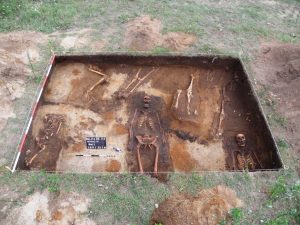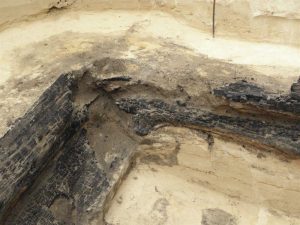Archaeologists excavating for the first time in the area of the forgotten city of Dzwonowo, western Poland, discovered hundreds of artefacts and revealed a cemetery dated to period between 14th-18th centuries. The city itself was discovered through analysis of satellite images in 2014.

The Medieval city known once as Swanow or Zwanowo is now a small village called Dzwonowo, located in the middle of the Zielonka forest, North of Poznań. The earliest records of the town are dated to the beginning of the 14th century. The discovery was made in a region poorly prospected by archaeologists because of dense forestation. Due to the fact that the area of the former town was used for farming, the discoverer, archaeologists Marcin Krzepkowski, was able to spot the cropmarks while browsing through an open-access database. Analysis of the images allowed for potential reconstruction of the town’s layout.

The first season of excavations focused on two areas. Trenches were opened on the town square and on an area that proved to be the city’s cemetery. The burial ground was adjacent to the dirt wall surrounding the city. During the first week of the excavations the archaeologists examined 21 graves. Once of the buried individuals had a coin, struck during Polish king’s Sigismund III Vasa’s reign, placed inside the mouth. This find allowed for dating the burial to the first half of the 17th century. There are evidence that a church, dedicated to St Michael, stood near the cemetery, but has been brought down nearly 250 years ago and its location is at present unknown.

Excavations at the town square revealed remains of Medieval buildings in form of burned and filled cellars. Its walls were made of wood and the archaeologists trace their destruction to war that lasted in the region in the 80s of 14th century. The houses burnt to the ground, including the cellars but soon after the event the buildings were reconstructed. Within these structures a number of artefacts was found, including a dinar coin of king Władysław the Short, dated to 1312-1333, combs, whetstones, iron knives, flints, and belt buckles that testify to the wealth of the contemporary material culture of town’s inhabitants.

Archaeologists plan to return to the city to conduct further studies, including non-invasive research. They also aim at finding the remains of a settlement that preceded town’s founding.
(after Nauka w Polsce & Marcin Krzepkowski)